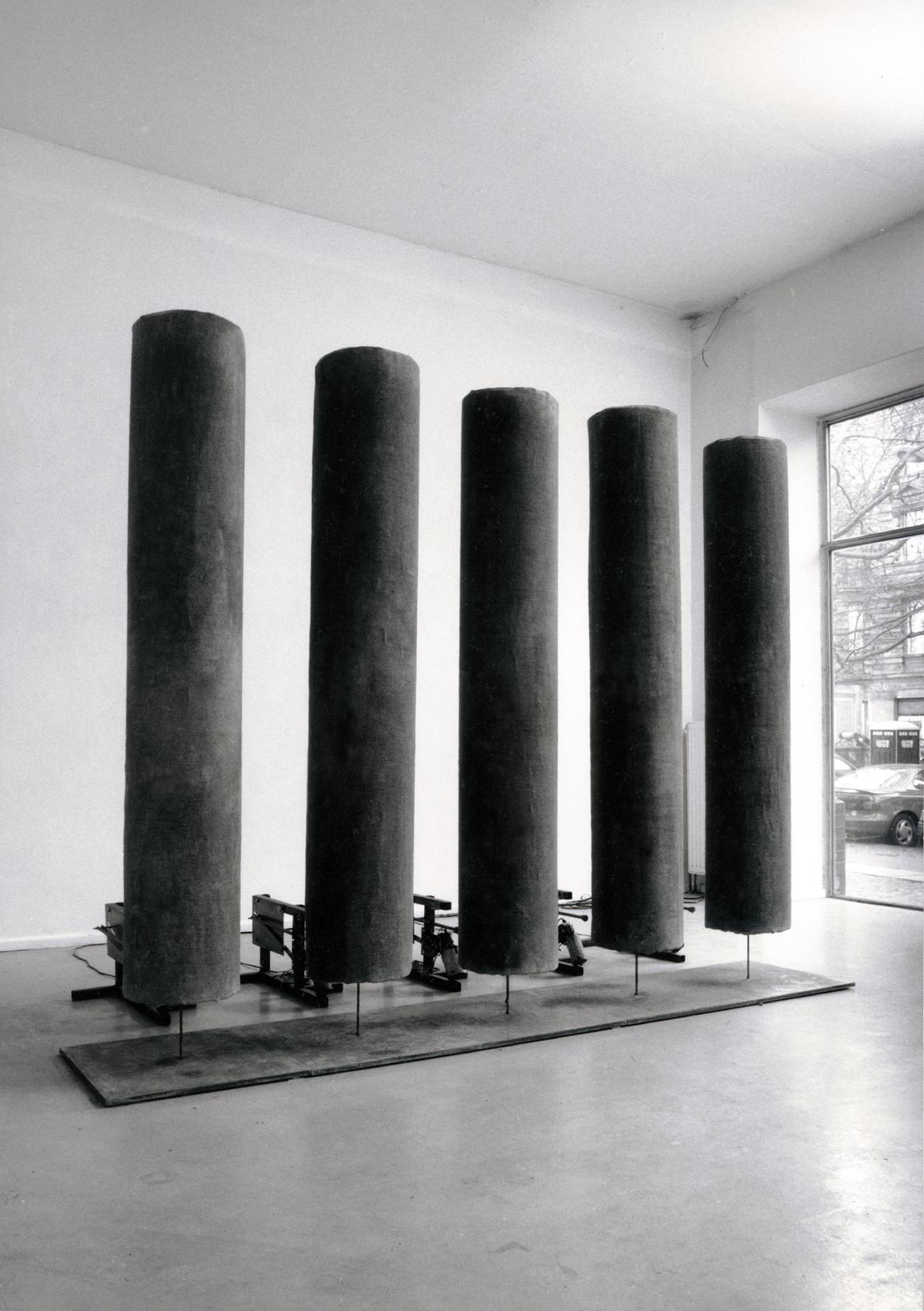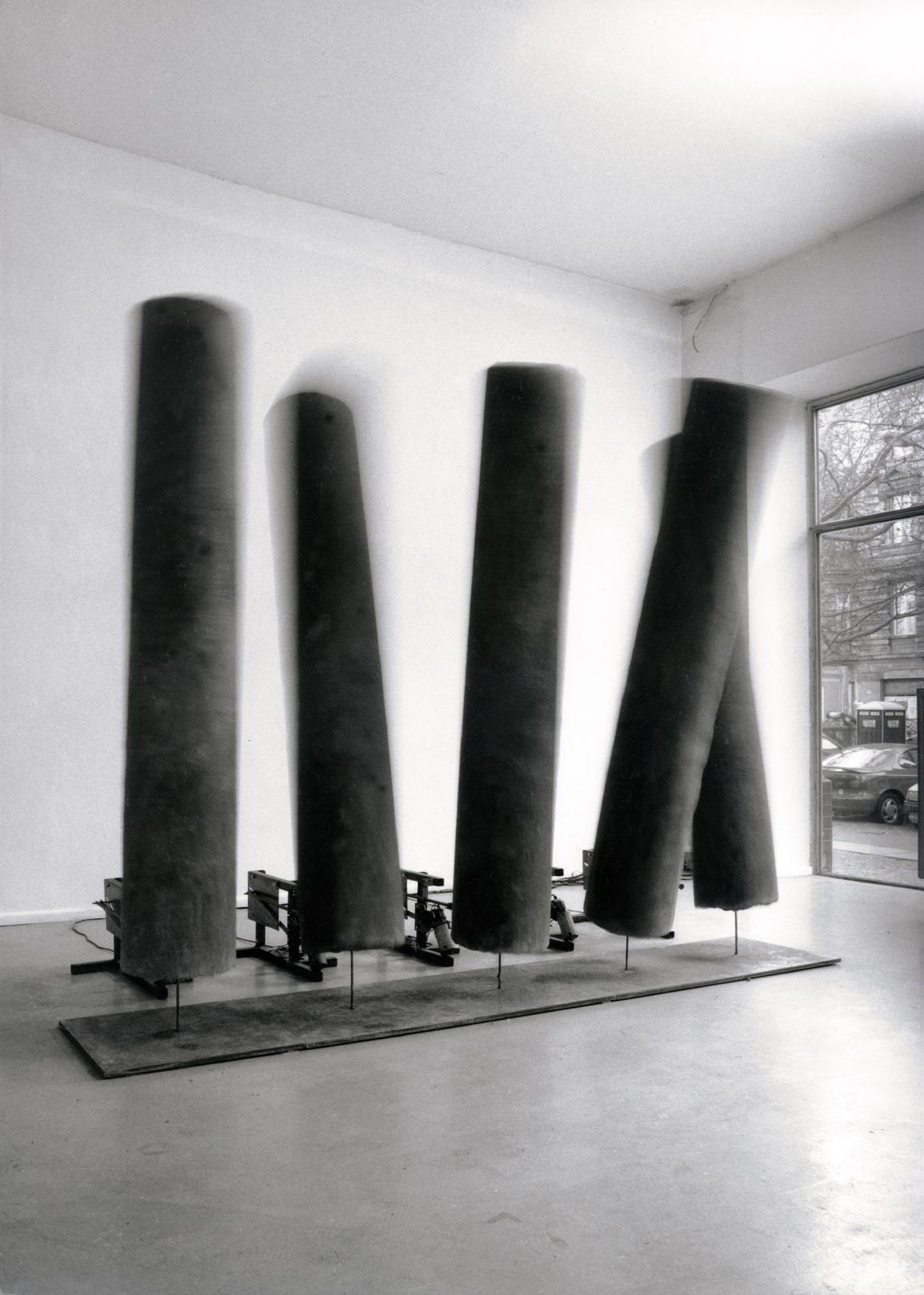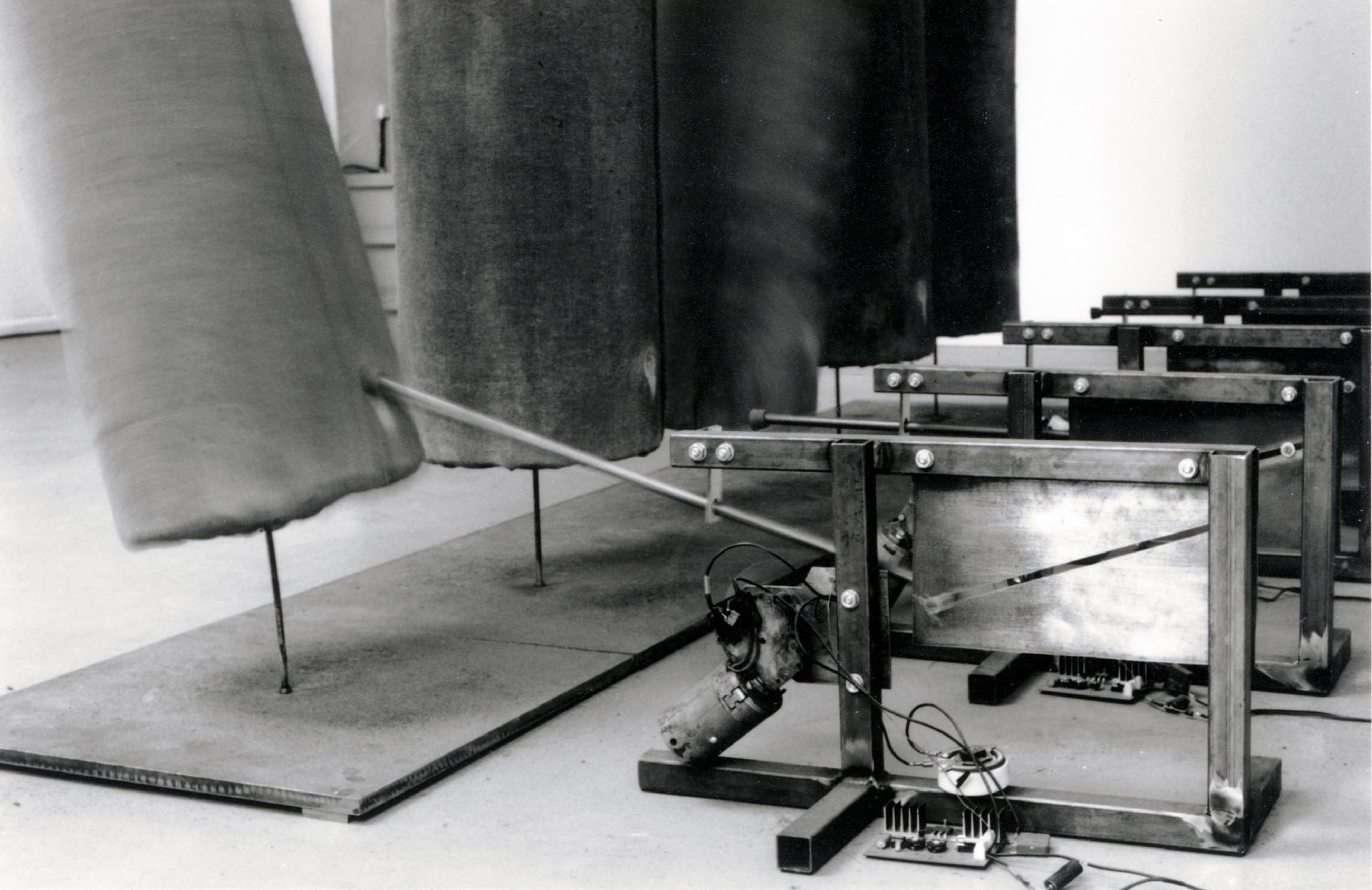M_5
Kinetic installation, 1991/92
(Spring)steel, foam material, sackcloth, ash, motors
Notes on Josefine Günschel's installation in the Gallery o zwei
A work of art especially suited to dark November days can be found in the Gallery o zwei. Anyone who decides to leave his dimly-lit den and make his way across the shiny cobblestones, collar upturned, into the brightly-lit gallery will find an illustrated excursion into the mechanical workings of melancholy.
Günschel, who, in projects such as "Nachtbogen", has been known for her delicately provocative disruptions to our perceptions, has directed her attention to the "the lazy burden of the world" as one baroque poet said when describing the feeling of melancholy.
Laziness is a burden, the very nature of which consists of the desire to overcome itself. The condition of wanting to overcome is often replaced by the mundane, habitual behaviour of reluctance. Rejection in its turn is clearly seen in body language – the body reflects inner states of being which language seeks to transform in order to conceal awareness.
Günschel has placed a row of ash-grey pillars in the room and exposed them to machinery that strikes out at them with groaning, metallic sounds. The columns sway, bend, keel forward and finally fall back, almost into their original positions. The striking action is timed and distributed in such a way as to hinder the establishing of a normal momentum. From time to time, the columns come to a standstill, the heaviness that was apparent in their structured movements giving way to the floating ease of motionlessness.
The possibility that stillness can be experienced in contradictory ways as: a voluntary letting go, an acceptance or resignation to the condition of being, a forced presence, doing nothing and being still, or that it can be experienced as a deep outwards breath or as a cold freezing up – that such an array of possibilities are incorporated in one concept is but one of the lines of association Günschel's work sets into motion.
The structures of movement, from which Günschel only shows us an extract, awaken in the viewer's entire body an awareness of how tiresome the nature of existence can be and reminds him or her how their efforts to overcome the lethargy in their bodies as well as the inertia in their hearts are often comically helpless and futile.
The fact that the viewer, being made aware of movement, is also made aware of the complexities of his or her inner condition speaks of the strength and precision of the work. "One never shares thoughts, one shares movements, expressive signs from which we read backwards to the thoughts". (Nietzsche)
Christine Hoffmann



